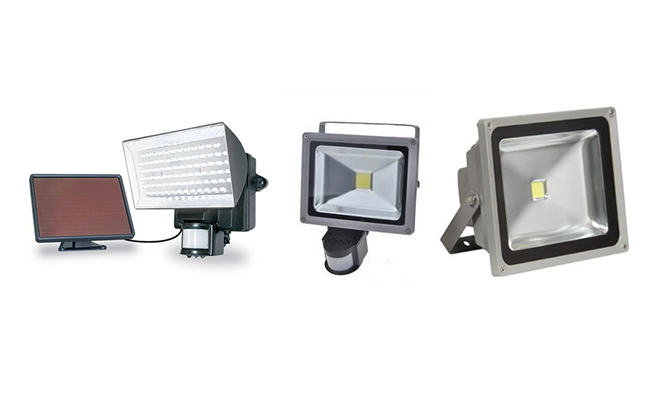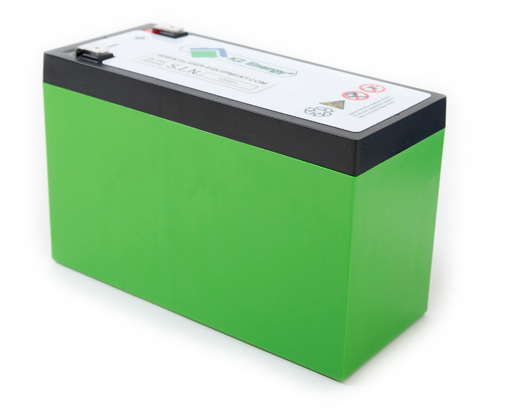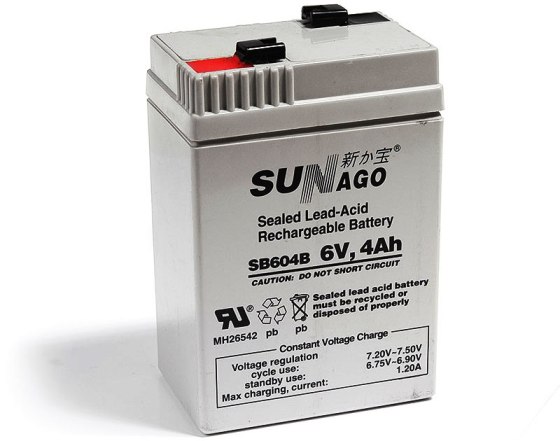Flood light Types
In 2013 if you want to buy a flood light you have so many options with different sizes, wattages, bulb types and even different power supplies. This huge amount of different lights can overwhelm almost anyone who wants to purchase a light so I will give you an insight in the categories how are flood light sorted. So Floodlights are usually categorized :
-
by their usage,
-
by their bulb type,
-
By the method how they are powered.
But these are by no means the only three options how you could categorize them but in general these are the main types how you will be able to find the best floodlight for yourself. I will now dig deeper in each of these three categories and explore how each category is divided and you will see just how many types there are!
By their usage
So the first category how lights with large light spread are sorted is by their usage or specifically where they are used. The first three subcategories are:
-
For home use – These are typically the security lights with motion sensors or regular lights that illuminate garden art objects or houses and even remote sheds and basically everything else that non commercial users would need to illuminate.
-
Commercial use – These are usually lights that are couple of hundred watts in power and can illuminate a medium to large backyard or storefront but also have motion sensors for security purposes.
-
Stadium and stage lighting – This is the most powerful flood light market and these lights are in thousands of Watts in power and they can illuminate Huge areas like football stadiums and other places where Very bright light is needed in very very large quantity.
And again they are not the only ones but for the purpose of this article these three will be enough.
While the place where these lights are placed is crucial , that is not their only usage factor and they can also be categorized by the way people use them :
-
As security lights,
-
As garden decoration lights,
-
For sign and other object illumination,
-
For patio and staircase illumination,
-
Very huge area lighting,
-
Remote region lighting,
-
etc.
There are much more ways you can use them but I just mentioned a few to give an insight of how huge is the Flood light market and how broadly they are used.
By bulb type
Second big category how you can sort these lights is by their bulb type and this is a huge one because all bulbs have different properties, characteristics and each bulb is better at different circumstances.
-
Incandescent – So we start up with the most widely known bulb type and it is the Incandescent one. I will not go into details how incandescent light bulbs work and about their history but I need to say that they are still being widely used as a light for illuminating wide areas. This is sad because these bulbs are very inefficient and they can have less than 10 lumens per watt of electricity (go to wiki article on lumens to find out what exactly they are) and they also have very short lifespan that is often less that 1000 hours. But there are also good sides for incandescent flood lights as their initial costs are the lowest comparing to other bulb type lights and their turn on period is small and that means that they can be used in security lights where it is crucial to get maximum light exactly at the moment when the motion sensor is triggered. So overall Incandescent bulb flood lights are cheap but their counterparts will fastly recover the initial investment in energy savings and bulb life span, and this is why most countries have programs to slowly phase out incandescent bulbs and to let more energy efficient lights take their place.
-
Fluorescent – The fluorescent light technology is also widely known by now as CFL and T5, T8 and T12 bulbs are widely used in commercial and home applications. So there are also Fluorescent flood lights but they are not as well known and widely used as for example Halogen or LED ones because they take long to warm up and that means they cannot be effectively coupled with motion sensors in security applications. But as I mentioned before there are many different flood light usages so for example as a light that illuminates signs , sheds and garden fountains, flowers, these lights work beautifully because they are very efficient (50 to 100 lumens per watt) and their bulb lifespan can be up to 20000 hours. And because CFL technology is now widely used their costs have come down significantly and they are not much more expensive than incandescent lights and the small initial price difference will pay off in no time at all and you will be saving money long after the incandescent counterpart light bulb will have to be replaced.
-
Low Pressure Sodium – The third light in our list is the Low pressure sodium one and this is a particularly interesting light because it is the most efficient light source that you can find. These lights can have up to 200 lumens per watt of electricity so they can be more than 20 times more efficient than incandescent bulbs but they have their drawbacks. The first one and the major one is that these lights produce a very narrow spectrum light that is in the yellow / orange range and under this light everything looks yellow so this light is not suited for areas where you want to illuminate art objects or where different color perception can harm someone. The second thing about these floodlights is that they are hard to come by and so their price is not that pleasant.
-
HID – High Intensity Discharge lights are Metal Halide and High pressure sodium ones and these are the lights that usually have large wattages and huge lumen output because their technology is built in a way that as the bulb gets larger it gets more efficient so larger HID fixtures makes more sense. These light have from 100 to 150 lumen per watt of electricity efficiency but they have a weak side because they usually run very hot so indoor applications can become dangerous. Both Metal Halide and High pressure sodium lamps have similar lumen output but they have different color spectrum outputs and Metal Halide lamps produce more of the blue spectrum whereas the High Pressure Sodium one produce more of the Warm White or the yellow and red colors.
-
Halogen – Halogen lights are another widely used floodlight type and it is similar to the incandescent bulb but it is a bit more efficient and produce better light and in Halogen bulb light you will be able to easily tell colors apart and that means this light has very close color rendering index to SUN’s 100 %. Halogen bulbs have average life spans and they have a bad habit of also getting very hot so they are also usually used in outside applications with larger wattages.
-
LED – The final and the most interesting flood light bulb type is the LED diode one. LED diodes as you might know are the next big thing in the lighting industry because they are very efficient and they have amazingly long life spans. LED lights have efficiency ranging from 50 to 150 lm/W so they are quite efficient and the newer generation diodes have also a good even light spectrum and good color rendering index. But the best part of these light bulbs is that they have up to and more than 50000 hour life spans that equates to more than 6 years of continuous running. This is an amazing achievement because no other light source can match these LED diodes in their life expectancy and they are also more efficient than most of the other contenders. One more thing where LED lights are better than other light sources is the light output depreciation rate when the bulb gets older as LED diodes have only up to 30 % less light output when they have been used for 10000 to 25000 hours. In comparison Fluorescent and Incandescent lights can get less than 50 % of the initial light as they get older so once again LED diodes are better. The only thing where Led floodlights are lagging behind other technologies is the price as still this technology is being developed so the initial cost will be greater than other light but it will quickly pay back in the lower electricity bills.
By the power supply
Floodlights can also be categorized by the way they use electricity as not all of the floodlights need an electrical outlet to produce light:
-
Lights that require an electrical outlet – These are all the typical lights that run off an electrical outlet and need continuous power supply like any other lightsource.
-
Battery powered flood lights – Battery powered light can be quite a shock to someone that have never seen them because everyone has the thought that floodlights use a lot of electricity. In most cases this statement is true but if you take LED lights or other efficient light bulbs then you can couple them with a rechargeable battery pack and have a portable flood light that can be used almost anywhere.
-
Solar powered flood lights – This is actually a subsection of the battery powered lighting but because it is used differently I put it separately from the main category. So solar powered flood light is another great technology creation that lets you run your light completely free by charging batteries in the day and running the light from that charge in the night. This setup has become widely popular in the recent years with the development of more efficient LED diodes that coupled with larger capacity rechargeable batteries and more efficient solar panels gives the possibility of running a flood light completely from solar power.
After these three main categories and much more subcategories you can see that floodlights have many different types and usages that can be categorized in many different ways. I hope this categorized article will clear things up and now you will be able to find the light that you need.





